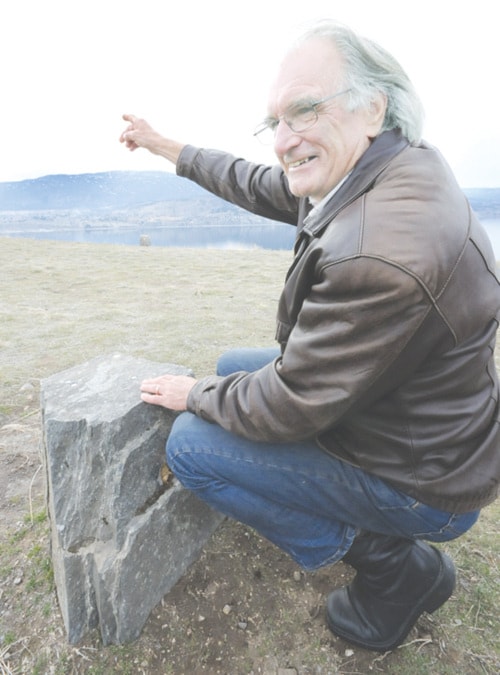Spring officially arrives next week, and the community is invited to celebrate its impending arrival, astronomer-style.
The Okanagan Centre of the Royal Astronomical Society of Canada welcomes the public to join them in observing the vernal equinox with a pilgrimage to Pen Henge Monday night.
The standing stone array at the top of Munson Mountain will be the setting to watch the sunset. If clear skies permit, participants will be able to watch the shadow cast by the setting sun creep slowly from the equinox stone to align perfectly with the heel stone.
While the actual moment of vernal equinox will take place at 10:15 p.m., the sunset is scheduled to happen around 6:40 p.m. Participants are recommended to gather at Pen Henge at 6 p.m.
Chris Purton, a retired scientist at the Dominion Radio Astrophysical Observatory at White Lake, will lead the observance as other society members set up safely filtered Sunspotter telescopes to allow solar viewing by the public and precisely time the sunset.
Pen Henge stones delineate the sunset points on the four cardinal dates of the year. Anchored by the heel stone, the equinox stone aligns with the sunset point at both the spring and fall equinoxes, while the other two stones mark the winter and summer solstice setting points, respectively.
“For most of the year, the structure simply illustrates the enormous range along the western horizon where the sun sets. Most people subconsciously know this, but they are quite fascinated to see the idea laid out so graphically,” Purton said.
Photos of the array can be viewed on the website at www.ocrasc.ca through the image gallery link and Pen Henge folder.
The Pen Henge project was conceived in 2009, during the International Year of Astronomy by members of the Okanagan Astronomical Society, which is now part of OCRASC.
